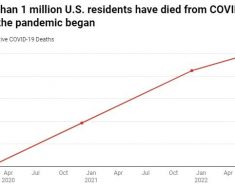In a recent study published in PLoS Pathogens, researchers explored probable humoral immune mechanisms related to Epstein-Barr virus (EBV) curtailment, besides neutralization, by a systematic emphasis on antibody (Ab) fragment crystallizable (Fc)-functional activities over the course of EBV infections.

Background
Studies have reported that EBV infections have driven autoimmunity, infections such as infectious mononucleosis (IM), posttransplant lymphoproliferative diseases (PTLD), and malignancies (Hodgkin’s lymphoma (HL), Non-Hodgkin’s lymphoma, nasopharyngeal carcinoma (NPC), and gastric carcinoma) in a significant proportion of the human population.
Thus, vaccines and other immunotherapeutic measures are required urgently for tempering EBV-associated pathology. Neutralizing Abs (nAbs) have been hypothesized to be effective against EBV. However, vaccine-induced levels of glycoprotein (gp)350-targeted nAbs have not been proven so.
About the study
In the present study, researchers characterized the specificities and Fc-functionality of anti-EBV Abs over the course of EBV infections (from acute to convalescent stage).
The humoral immunological response landscape for EBV was dissected among male (n=6) and female (n=4) college students with IM symptoms over the course of EBV infections. Sera were obtained from the students over a period of one year, and for reference, serum samples of four persons with chronic EBV infections [C-EBV+: viral capsid antigen-negative (VCA)– immunoglobulin M-negative (IgM–) IgG+, early antigen (EA) IgG–, EB nuclear antigen-1 (ENBA-1) IgG1+] were included.
The presence and state of EBV infections were determined by enzyme-linked immunosorbent assays (ELISA), and the number of EBV-infected B lymphocytes was evaluated by quantitative polymerase chain reaction (qPCR). In addition, pathogen-specific IgG repertoire analysis (VirScan) and next-generation sequencing (NGS) analyses were performed.
Acute infections were confirmed by elevated VCA–IgM titers and negligible EBNA-1 IgG titers. The chronic EBV phase was confirmed by negligible VCA-IgM and elevated VCA-IgG and EBNA-1-IgG titers at 12 to 24 weeks post enrollment (wpe). The severity of illness (SOI) was self-assessed by the participants based on physical activity limitations and intensity of symptoms and pain.
Antigen-targeted IgM responses and the response-dominating IgG subclasses IgG1 and IgG3 were quantified. The antigens selected were p18), p47/54, gp350/220, and EBNA-1. In addition, three influenza hemagglutinin 1 (HA1) of 2014 to 2015 seasonal vaccines were included for reference. For exploring Ab-mediated functionality, the Ab-dependent complement deposition (ADCD) was investigated using flow cytometry (FC). Depletion studies were performed by depleting antigen-targeted IgG or IgM from sera in the acute phase to identify the Ab class responsible for p18-ADCD.
Further, the role of Ab-dependent cellular phagocytosis by monocytes (ADCP) or by neutrophils (ADNP) was investigated. The capability of EBV antigen-specific Abs to interact with Fc gamma receptors (FcgRs) was assessed by multiplexed FC analysis to assess the probable influence of EBV-targeted Abs’ FcgR binding efficacy on Fc-mediated functionality. Lastly, the functional Ab profiles during acute human immunodeficiency virus (HIV) infections were compared with that of acute EBV infections.
Results
The mean age of the study cohort was 22 years. Three students showed signs of early EBV reactivation (EA–IgG rise after previous signal diminution) at 12 to 24 wpe. All participants experienced severe IM symptoms in the acute EBV phase (median SOI score at zero wpe was 4.5); however, most were asymptomatic in four wpe.
Anti-EBV IgM titers were generated during the acute IM phase but waned rapidly. Beyond four wpe, only p47/54- and p18-targeted IgM titers were detectable consistently, and antigens p47/54 and p18 dominated IgM responses (median μg IgM peaks for p18, p47/54, gp350/220, and EBNA-1 were 55,113, 5.7, and 7.7, respectively. EBV stimulated gp350/220-, EBNA-1-, and p18-targeted IgG1 titer generation, and p47/54-targeted IgM titers could not translate to prolonged IgG1 memory responses.
EBV-targeted IgG1 titers were significantly lesser than influenza HA1-targeted Abs. IgG3 responses were found for p47/54 and p18 primarily. Both EBV antigens dominated the IgG3 subclass (median peak μg reference IgG3 for p18, p47/54, gp350/220, EBNA-1, and influenza HA1 were 6.1, 23, 2.2, 2.4, and 30, respectively. IgG3 and IgG1 subclasses dominated the active and latent phases, respectively.
ADCD was mediated by p18 exclusively in the acute phase; however, p18-specific Abs waned with time. IgM but not IgG depletion caused ADCD activity loss, indicating that IgM mediated p18-ADCD in EBV infections, but p18-ADCD did not persist in the chronic phase. The frequency of EBV genomes/106 B lymphocytes reduced over the infection course.
Ab functions against the two early (p47/54 and p18) and latent (EBNA-1 and gp350/220) EBV antigens were modest and short-lived, differing from humoral responses induced in acute HIV infections. After a year of infection, p18 induced strong IgM-mediated deposition of complement and IgG-mediated phagocytosis. Anti-p18 Abs mediated ADNP responses lasted ≥12 months, and EBV-Ab mediated natural killer (NK) activation was detected in the chronic phase.
A heterogeneous response pattern was observed in the acute phase, which differed among individuals, and was wider after 24 wpe. The lack of robust and broad Fc-functionality induction across EBV antigen-specificities was not a result of an overall EBV incapacity to induce broadening humoral responses. Anti-p18 Ab-mediated Fc-functions and anti-EBV IgM correlated with SOI scores, indicative of a potential role of Fc-mediated functions in disease modification during EBV infections.
Conclusion
Overall, the study findings showed EBV evasion by strong Fc-functional Ab induction, probably due to the switch from the acute to the latent stage during EBV infection, thereby probably enabling persistent and life-long infection with EBV infection consequences.
- Karsten, C. et al. (2022) "Evolution of functional antibodies following acute Epstein-Barr virus infection", PLOS Pathogens, 18(9), p. e1010738. doi: 10.1371/journal.ppat.1010738. https://journals.plos.org/plospathogens/article?id=10.1371/journal.ppat.1010738
Posted in: Medical Science News | Medical Research News | Disease/Infection News
Tags: Antibodies, Antibody, Antigen, Autoimmunity, Capsid, Carcinoma, Chronic, Cytometry, Efficacy, ELISA, Enzyme, Epstein-Barr Virus, Evolution, Flow Cytometry, Frequency, Glycoprotein, HIV, Immunodeficiency, Immunoglobulin, Influenza, Lymphoma, Mononucleosis, Nasopharyngeal, Neutrophils, Pain, Pathogen, Pathology, Phagocytosis, Physical Activity, Polymerase, Polymerase Chain Reaction, students, Vaccine, Virus

Written by
Pooja Toshniwal Paharia
Dr. based clinical-radiological diagnosis and management of oral lesions and conditions and associated maxillofacial disorders.
Source: Read Full Article





